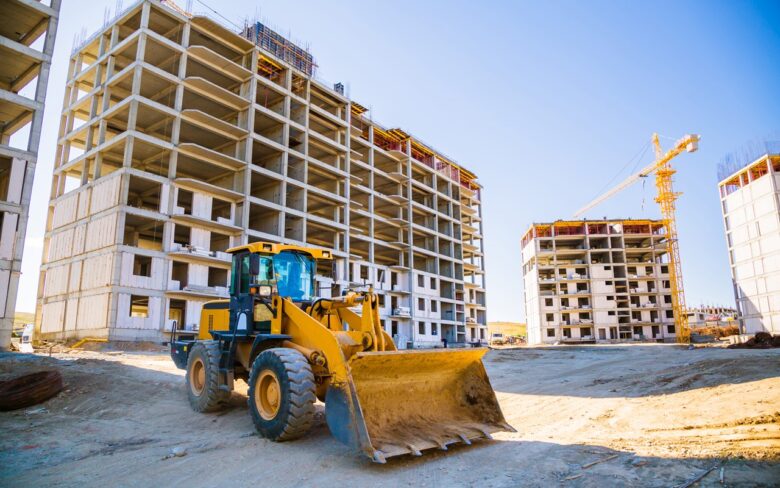Unlike manufactured products that have standard production costs, construction projects can involve many additional
expenses. Therefore, each construction project must be estimated separately and accurately. Some of the main factors that affect the cost of a construction project include:
- Labor wages – Some areas have higher labor wages than others, making building in those areas more expensive.
- The cost of construction material – The cost of material will depend on whether or not it’s being shipped from overseas, the quality of material used, and its availability.
- The cost of past similar projects – You can know the cost of a construction project by comparing it to what other similar projects have cost in the past.
- The conditions of the construction site – If the site has poor soil conditions or is in an environmentally-sensitive area, then the cost will be higher.
- The duration of the project – The longer a construction project lasts, the more expensive it will be to manage. This is because renting out equipment and maintaining your labor force will cost more.
The benefits of having accurate construction forecasts

1. You avoid overestimation
Overestimation means estimating construction figures that are too high, which has its disadvantages for both the project owner and contractor.
If you’re a product owner and you overestimate a construction project’s cost, you’ll end up paying more than you should have for the property. As a result, you’ll have reduced profit margins.
If you’re a contractor and you overestimate the cost of a construction project, then you risk losing out on competitive bids. This is because your bids will be too expensive for property developers to accept.
2. You avoid underestimation
Another advantage of having an accurate construction forecast is that you avoid underestimating the cost of the construction project. If you underestimate the cost of your construction project, there’s the risk that it might stall. If the project is bank financed, the cost of financing the loan will also increase.
3. You reduce construction risk
As a property developer, accurate forecasts help you avoid the risk of a project stalling because you underestimated the cost of materials and renting out equipment.
As a contractor, you may be held liable due to failure to deliver as agreed with the property owner.
4. You ensure the project is completed on time
If you accurately forecast your construction project, you’ll be able to identify financial loopholes that can cause the project to stall. Once you identify these loopholes, you can either increase your budget or seek additional funding. Externalities to consider are tariffs imposed on equipment, inflation, and government policies.
How to ensure accurate forecasts for construction projects

Use technology
There are two ways to create an accurate forecast: use an Excel spreadsheet or an AI-powered construction optioneering platform such as the one offered by ALICE Technologies. This is the first optioneering software created to help contractors make more accurate forecasts.
The system uses different data types, such as estimates, designs, and schedules to calculate possible construction approaches. The software also makes it easy for general contractors to know where project managers should add more time and resources to ensure a project is completed on time.
Check your labor costs and factors affecting labor
One main factor that can stall a construction project is labor. According to a report compiled by McKinsey, construction wages between 2019 to 2024 grew by 7.9%. As of October 2024, there were more than 400,000 unfilled construction positions.
If you’re planning a large construction project that will take several years to complete, it’s in your best interest to factor in wage rate increases and labor shortages. Doing this makes it easy to plan for wage increases and source skilled labor in advance.
Reduce your assumptions
Assuming factors (especially those that don’t directly affect cost) can end up being detrimental. One assumed factor is that construction projects can’t be stalled due to weather conditions.
But extreme snow conditions can make it impossible for construction workers to do their job, resulting in project delays. When the ground is frozen, it becomes difficult for the ground team to do excavation work.
Strong winds can also cause cranes to fall and create a dangerous working environment. The best way to reduce your assumptions is to verify your information and involve experts in your forecasting process.
Enhance collaboration with team members

If you want accurate forecasts for your construction project, you must ensure enhanced collaboration among all key players. Architects must be able to communicate effectively with structural engineers and main contractors. At the same time, contractors should be able to communicate with subcontractors and even share files effectively.
To enhance collaboration, project managers should use modern, cloud-based collaboration tools. Tools should be mobile-friendly to make it easy for everyone to share files and communicate through their mobile phones.
Consider both indirect and direct costs
An indirect cost is an expense that’s not directly associated with a construction project. A good example of an indirect cost is administrative expenses, such as salaries. When you forget to factor in indirect costs, you may find yourself under-budgeting, which can cause delays.
Other indirect costs you need to consider are promotions, rent, site leases, and miscellaneous costs. Miscellaneous costs include things such as computer equipment and office supplies.
Use historical information to your advantage
To understand the future, you must first learn about the past. If you have a good understanding of your previous projects, you may be able to avoid similar pitfalls in the future. A good example is realizing when similar projects from the past share a financing problem. In this case, you can seek several financing options to avoid this pitfall.
Another good example is when you realize that wage rates increase by more than 7% yearly. In this case, you can accommodate the wage increase in your budget, helping you avoid budget constraints in the future.



